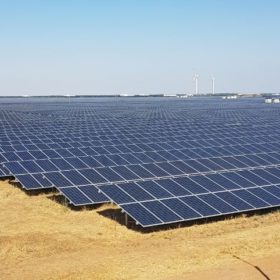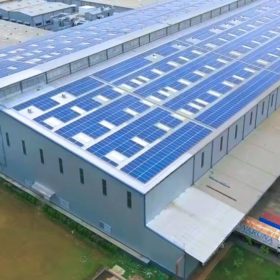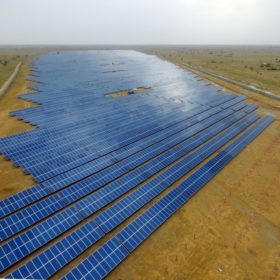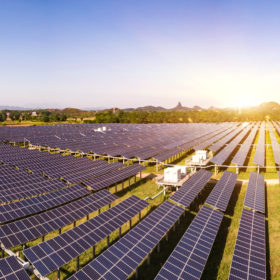Tata Power commissions 100 MW in Karnataka
Tata Power Renewable Energy Limited has completed a 100 MW solar PV project at Pavagada Solar Park in Karnataka. Tata’s total installed operating capacity across India now totals 1,641 MW.
Fortum connects 100 MW PV plant in Karnataka
A 100 MW solar park in Tumkur District has been connected to the regional grid in Karnataka, reports project owner Fortum. The project is Fortum’s fourth project to be connected in India, and its largest so far, more than doubling its total capacity to 185 MW.
Uttar Pradesh updates solar power policy
Uttar Pradesh released a new solar policy on December 7 for the development of 10.7 GW of solar installations in India by 2022, including 4.3 GW through rooftop solar. The government has proposed several incentives and offers to promote solar growth in the state.
Maharashtra leads solar rooftop market in India
India has installed total 1,861 MW rooftop PV as of September 2017 as the state of Maharashtra overtakes Tamil Nadu to become largest for rooftop solar, as per latest report by Bridge to India. Analysts have revised India’s rooftop projection to 10.8 GW by 2021.
BNEF summit: Low solar prices spreading spending doubt among Tier-1 firms
Trina Solar may scrap planned Indian PV fab amid tumbling prices driven by solar auctions, reports Bloomberg New Energy Finance during its Shanghai summit. Demand for lithium, meanwhile, poised to reach record high on back of expected EV growth.
India’s bold 2018 solar plans to boost domestic manufacturing, jobs
“Huge demand” will be created in the Indian solar market in 2018 on the back of the government’s plans to auction off 20 GW worth of projects, says IHS Markit. Companies will only be permitted to take part in the auctions, it says, if they set up manufacturing facilites in the country. Jobs will also be created.
PPAs signed for 750 MW Bhadla solar projects
The Solar Energy Corporation of India has signed power purchase agreements for the five solar projects totaling 750 MW. At auction, the Bhadla projects attracted the country’s lowest bids at INR 2.44 ($0.037)/kWh.
Solar developers not following DCR policy may face government action
India plans to take action against solar power companies using imported equipment for projects, which were awarded under the country’s domestic content requirement scheme, according to local media.
Jammu and Kashmir: 14 MW solar tender postponed
SECI has postponed the uploading of a tender document for 14 MW worth of grid-connected solar plants, including 42 MWh battery storage systems, for the Leh and Kargil districts of J&K.
MNRE releases roadmap for achieving 100 GW solar by 2022
The Indian government has finally clearly stated its solar objectives, and unveiled its plans for speeding up the work required to achieve them. The government is confident of achieving its 100 GW solar goal by 2022. The issue of rooftop solar is still to be addressed, however.















